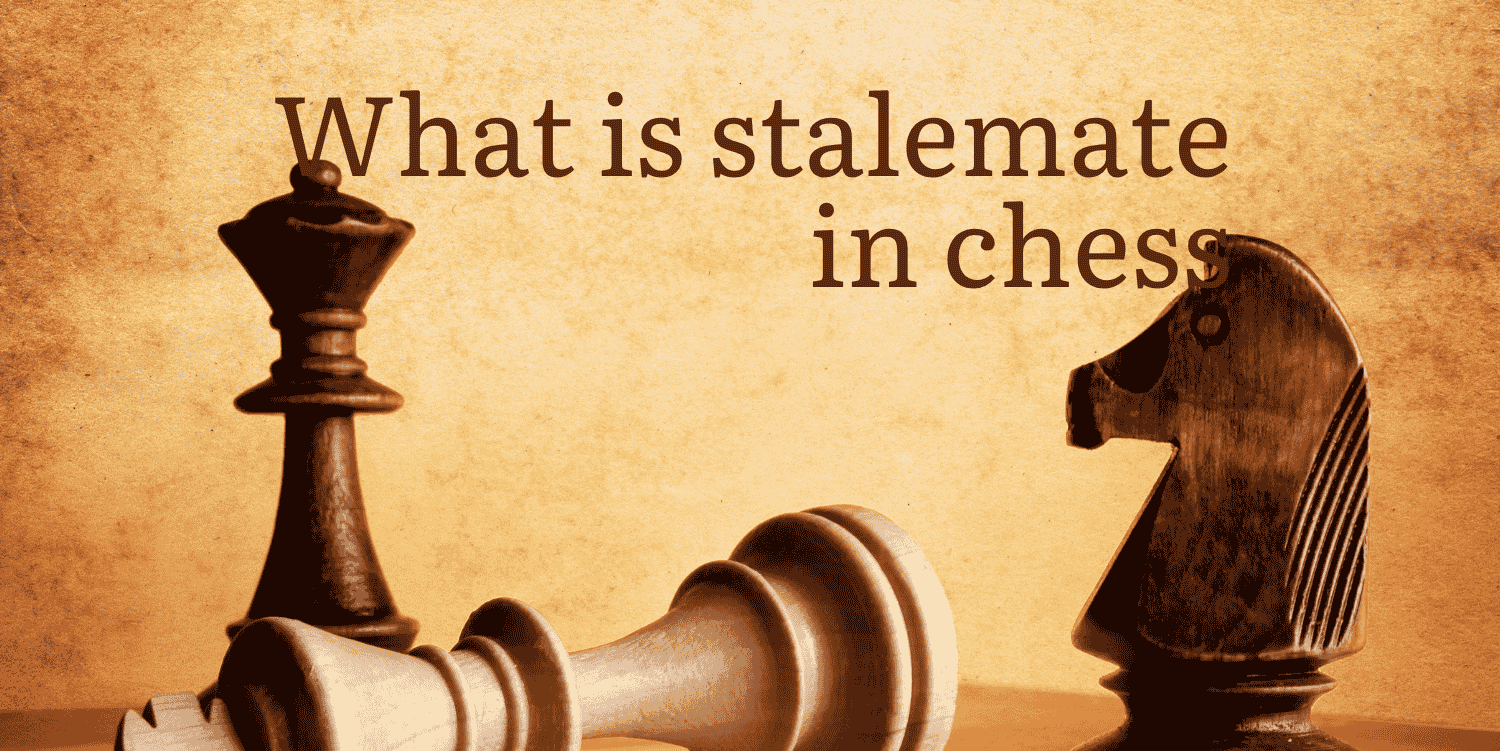Stalemate is one of the most intriguing and misunderstood rules in chess. It occurs when a player, on their turn, has no legal moves left, and their king is not in check. The game ends immediately in a draw.
Stalemates can frustrate even experienced players, especially when they are close to winning. At the same time, they can be a saving grace for a losing side. In this blog, we’ll explore what stalemate is, how to avoid it, how it differs from checkmate, and its implications in gameplay and tournament rules.
What Is a Stalemate in Chess?
A stalemate happens when the player whose turn it is has no legal move available, and their king is not under threat (not in check). Since the player cannot make a legal move, the game ends in a draw—no matter how many pieces either side has.
Example:
Imagine Black has only a king left, while White has a queen and king. If White accidentally places the queen in such a way that the Black king has no legal moves and is not in check, the game is a stalemate.
Also Read: How to Start a Chess Game?
Is Stalemate a Win?
No, stalemate is not a win. It is considered a draw in chess. Even if one player has a significant material advantage (multiple queens, rooks, pawns), if they stalemate the opponent, the point is shared equally between both players.
This rule emphasizes precise technique in the endgame and adds depth to the sport. It ensures that the weaker side can still fight for survival through strategic defense.
Also Read: Basic Chess Rules for Beginners
Is Stalemate a Draw?
Yes, stalemate results in a draw according to FIDE (International Chess Federation) rules. This makes it different from other endgame outcomes like checkmate (a win) or resignation (voluntary loss). Stalemates are especially common in beginner games and in games involving time pressure.
Also Read: 10 rules of chess
Stalemate vs. Checkmate: What’s the Difference?
| Feature | Stalemate | Checkmate |
|---|---|---|
| King in Check | No | Yes |
| Legal Moves | None | None |
| Game Result | Draw | Win for the player delivering checkmate |
| Common Emotion | Frustration (if winning), Relief (if losing) | Victory or defeat |
Checkmate is the ultimate goal—trapping the king with no escape. Stalemate ends the game in a tie because the defending side is not under check, but still cannot move.
Also Read: Chess Clocks: History, Design, and Timing Methods
How to Avoid Stalemate (as the Winning Side)
Avoiding stalemate is crucial when you’re ahead. Here’s how to do it:
1. Learn Basic Mating Patterns
- Practice endgames like King + Queen vs. King, King + Rook vs. King, and King + Two Bishops vs. King.
- These patterns teach you how to drive the king to the edge and deliver checkmate without cornering it into stalemate.
2. Use “Waiting Moves”
Sometimes giving the opponent breathing room allows you to avoid stalemating them. Use a quiet move with your king or queen to give the enemy king a square to move.
3. Keep Track of Enemy Legal Moves
Don’t focus solely on your position. Track the opponent’s remaining legal moves to avoid unintentionally locking them out.
4. Avoid Unnecessary Captures
Don’t take the last pawn or piece if it leaves the opponent with only a king and no legal moves.
5. Watch for Pawns
Be especially cautious when promoting pawns. Promoting to a queen might cause stalemate—sometimes promoting to a rook or bishop is better.
Also Read: En Passant in Chess: The Most Misunderstood Rule Explained
Types of Stalemate
While all stalemates follow the same rules, they can occur in various scenarios:
1. Defensive Stalemate
When the weaker side forces a draw by intentionally limiting their own moves and avoiding threats. This is a survival strategy.
2. Unintentional Stalemate
When the stronger side blunders and causes stalemate unintentionally—common among beginners and even experienced players in time pressure.
3. Theoretical Stalemate
Some positions are known in chess literature where stalemate is the only escape. For example, King and pawn vs. King can end in a stalemate if not handled properly.
4. Endgame Stalemate Traps
Advanced players sometimes set traps to draw games from losing positions, luring opponents into stalemating patterns.
Also Read: 7 Chess Strategies to Secure a Win in the Endgame
Why Is Stalemate Important in Chess?
Stalemate keeps the game rich in strategic and defensive depth. It prevents brute-force winning and encourages clean endgame execution. It also teaches beginners the importance of board awareness, planning, and avoiding complacency.
In tournament settings, understanding stalemate can mean the difference between a half-point draw and a full-point victory.
Also Read: Types of Chess Games and Tournaments: Formats and Rules.
Final Thoughts
Stalemate may feel like a setback when you’re winning, but it’s one of chess’s most valuable lessons: every move counts until the very end. By understanding stalemates thoroughly, players can refine their technique, avoid unnecessary draws, and use stalemate as a powerful defensive weapon when needed.
Whether you’re a beginner or seasoned player, learning the art of avoiding or using stalemates strategically will make you a better, more thoughtful competitor.



